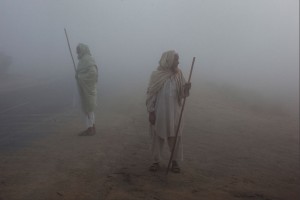 Afghanistan’s prominence in the news is subject to sudden change. The 9/11 attacks vaulted it into our attention. Iraq pushed it aside for years, until the Taliban reasserted itself and reconquered parts of the south and west. The rise of ISIL in Syria and Iraq pushed it aside once more, until ISIL established itself in Afghanistan and the Taliban launched an offensive in the north.
Afghanistan’s prominence in the news is subject to sudden change. The 9/11 attacks vaulted it into our attention. Iraq pushed it aside for years, until the Taliban reasserted itself and reconquered parts of the south and west. The rise of ISIL in Syria and Iraq pushed it aside once more, until ISIL established itself in Afghanistan and the Taliban launched an offensive in the north.
Almost forgotten, or ignored, are the heady expectations that followed the ouster of the Taliban. The US and ISAF allies were going to transform Afghanistan from an impoverished, war-ravaged land, home to opium traders and al Qaeda, into a modern country with a pluralistic government and modern economy.
A moment’s reflection will reveal the naiveté of these expectations, soon followed by realizing the lives lost and the trillions of dollars spent. The optimism of the early years was based on a sense of our limitless power alloyed with a need to strike back.
It was also based on poor intelligence.
Supply routes Poor landlocked countries such as Afghanistan present logistical problems for foreign armies. When Russia decided to intervene militarily in 1979, it did so with a common border. (Uzbekistan was then a Soviet republic, as were Turkmenistan and Tajikistan.)
In 2001, the United States, however, was thousands of miles away and friendless in the region since the Iranian Revolution. Diplomacy and extensive logistics would be needed to defeat the Taliban and rebuild Afghanistan. Both came easily amid the global outrage after the 9/11 attacks.
A southern route into Afghanistan came after considerable haggling with Pakistan. Russia, no friend of radical Islam, pressed Uzbekistan and Kyrgyzstan to grant the use of airfields and roads. Later, Russia would allow US supplies to transit its territory to reach Afghanistan.
Neither of these routes could have been considered reliable in the long term. Each country had conflicts with the US: Russia with the extension of NATO to the east, Pakistan with its nuclear program and support for radical Islam. The US entrusted its logistical lines to unfriendly countries.
Pakistan and its intelligence service The US dealt extensively with Pakistan during the Russian war in Afghanistan. American and Saudi money was funneled into the war by Pakistan’s Inter-Services Intelligence Directorate (ISI), and it was clear that ISI was playing favorites. ISI supported certain mujahideen forces, especially Pashtun ones, with an eye to strengthening its position in Afghanistan vis-a-vis its regional enemy, India. The US unwittingly helped.
ISI’s links to the Taliban were plain and should have invited caution in Washington. After the Russian withdrawal in 1989, amid the civil war that followed, ISI backed a group of Islamist fighters who imposed Islamic law as they won ground – the Taliban. ISI saw them as resolute enemies of Indian-backed northern Afghans, and as a partner in linking the promising Central Asian region with Pakistani export routes.
Pakistan, then, was not only unreliable as a logistical route, it had loyalties to the Taliban. What is more, ISI had ties to al Qaeda and to a handful of other Islamist groups which trained and sent guerrillas into Indian-administered Kashmir – another theater in the Indo-Pakistani conflict.
It should have been no surprise that, in the years after the end of Taliban rule, American forces learned that Taliban guerrillas enjoyed safe havens in Pakistan. Nor should it have been a surprise that when Osama bin Laden was finally found and killed, he was ensconced a stone’s throw from a Pakistani army base.
Resistance to central government Washington hoped to build a state that would stabilize Afghanistan and prevent al Qaeda’s return. US and ISAF advisers, military and civilian, poured into the country – an endeavor that was bound to take years to even begin.
Strong central states, however, are not well regarded in Afghanistan. Historically, its miscellany of tribes and peoples have preferred local government and looked upon Kabul officials with suspicion. In some areas, officials were not allowed to wander far from local administrative offices.
Attempts by Kabul to bring centralized education and land reform in the late seventies met with protests and uprisings, which in turn led to the Russian invasion. Afghanistan’s most peaceful and prosperous times are associated with Kabul’s disbursements of foreign money – British and later Russian – to local powerholders, who then governed their people.
Likelihood of a new insurgency A new Kabul government charged with modernizing state and economy was unlikely to succeed. A protracted stay by thousands of foreign officials, consultants, and soldiers – however well-trained and well-intentioned – was certain to worsen matters. Their ubiquity and numbers and lengthy stay would appear as a repeat of the Russian occupation, and lead to another insurgency, perhaps conducted by a resurgent and vengeful Taliban.
Washington’s answer to a growing insurgency was more foreign ground troops and later a welter of foreign-administered programs that enjoyed the talismanic name “counterinsurgency.”
These problems are admittedly more apparent in the rear view mirror. However, their possibility, if not their near certainty, should have been obvious to intelligence analysts in 2001. Clearly, the administration needed to respond to the 9/11 attacks, but how much caution was presented to them by intelligence agencies – CIA, State’s INR, DIA, and the rest?
Answers might help identify which parts of the intelligence community got it right and should be listened to more today, and which ones were caught up in the heady atmosphere of the time and set the stage for, if not advocated, a policy that has trapped us in a landlocked Central Asian country for years if not decades to come.
©2015 Brian M Downing